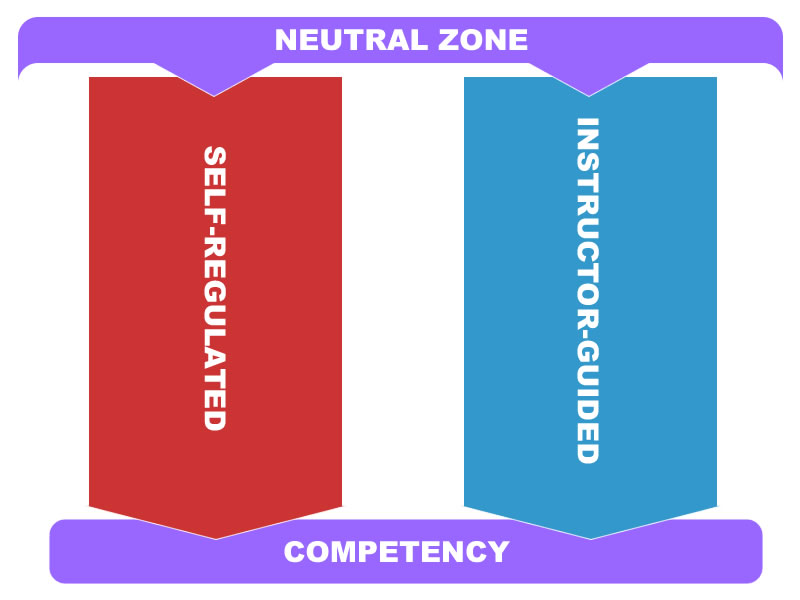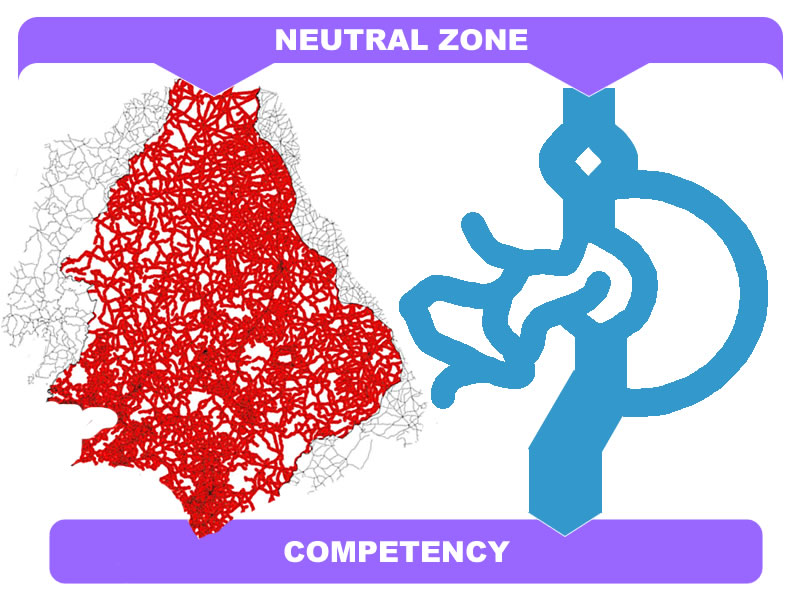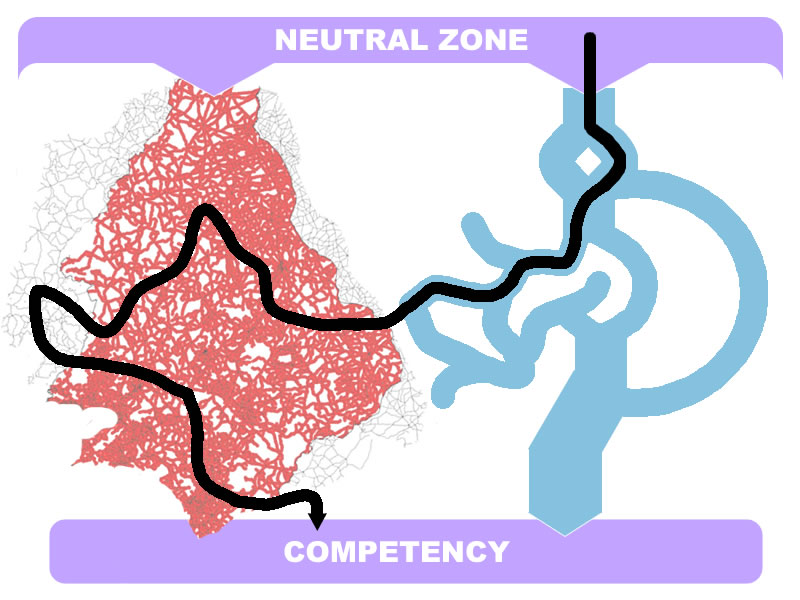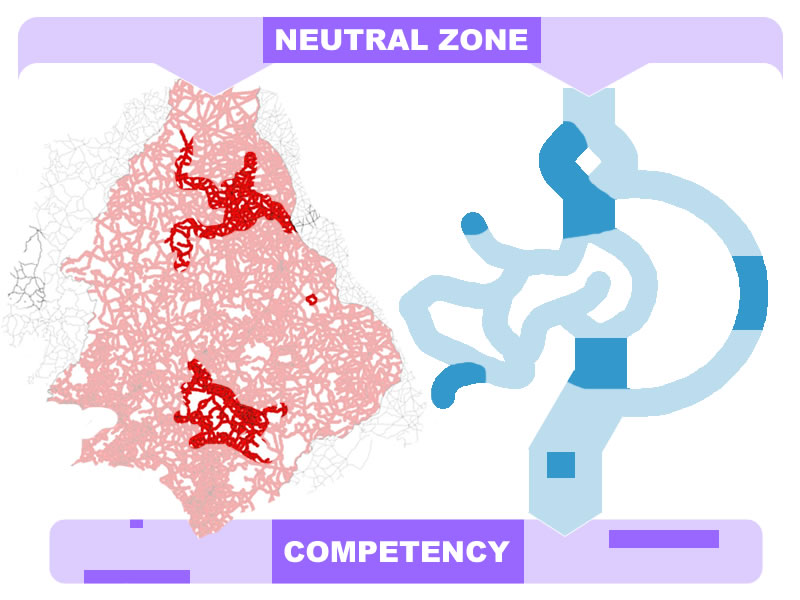Self-Mapped Learning Pathways are a method for designing course content in a heutagogical fashion to allow for learner autonomy and self-regulation while also scaffolding learners that need more direct instruction or are not ready for full autonomy. Due to diversifying learner needs and greater access to information in general, many educators are faced with trying to teach courses where some learners are new to the content, while others have differing levels of experience and knowledge with the topic. Additionally, different learners will have different goals for what they learn after the conclusion of the course. On top of all of that, various learners will come from different sociocultural contexts that provide different lenses for the entire learning process. Self-Mapped Learning Pathways is a design methodology that attempts to meet these various needs and goals of a diverse learning population.
The basic idea is to design a course with two modality options for learners to choose from. One modality is an instructor-focused guided option that follows a defined pathway through course content (sometimes referred to as instructivism). The other modality is a student-centered self-regulated option that allows learners to create their own pathway through the course content (sometimes referred to as connectivism). Learners can choose either modality or both at any point in the course, and then change that mix as needed at any time. The structure for this design would look something like this:
This structure lays the groundwork for learners to map their own pathway through the course structure and content. All learners would start at one entry point (sometimes referred to as a neutral zone) and work towards completion of a course competency or objective by navigating an instructor-centered and/or self-regulated modality. The simplest way to conceptualize these options would be like this:
However, the realty is that the self-regulated modality will be much more complex and organic (and would allow for many options not officially noted by the instructor), and even the instructor-centered modality could have some complexity to it:
Therefore, when learners map a pathway through the course content, their pathway could pass through many parts of both modalities, and even into some areas not covered by either:
Additionally, not all learners will approach the course structure in a linear manner. Some may elect to pick and choose parts from both modalities:
From the learner perspective, each course participant would create a learning map of what they plan to do for each competency (even adjusting or changing competencies if needed). They would then follow the map they created – making adjustments as necessary – while documenting their learning pathway through journaling or artifact creation. An additional level of reflection on the entire process would also be beneficial for learners in many ways. The end goal would be some type of portfolio that describes the learning process they took through the course, as well as reflections on why they made the choices they did.
Whereas this entire process might work for some course topics, other topics may not be a good fit for this model – or might require some parts to be scaled back or removed in order to work. The goal of this design methodology is to be flexible for various learning contexts rather than a “one size fits all solution.” The resources section has a list of many articles that go into various ways to implement various aspects of this model into different courses. A good place to start is with Chapter 13: Advanced Course Design in Creating Online Learning Experiences: A Brief Guide to Online Courses, from Small and Private to Massive and Open. This free online resource gives a brief overview of the theoretical foundations of self-mapped learning pathways, as well as some basic design methodology for creating space for these pathways in a course.





